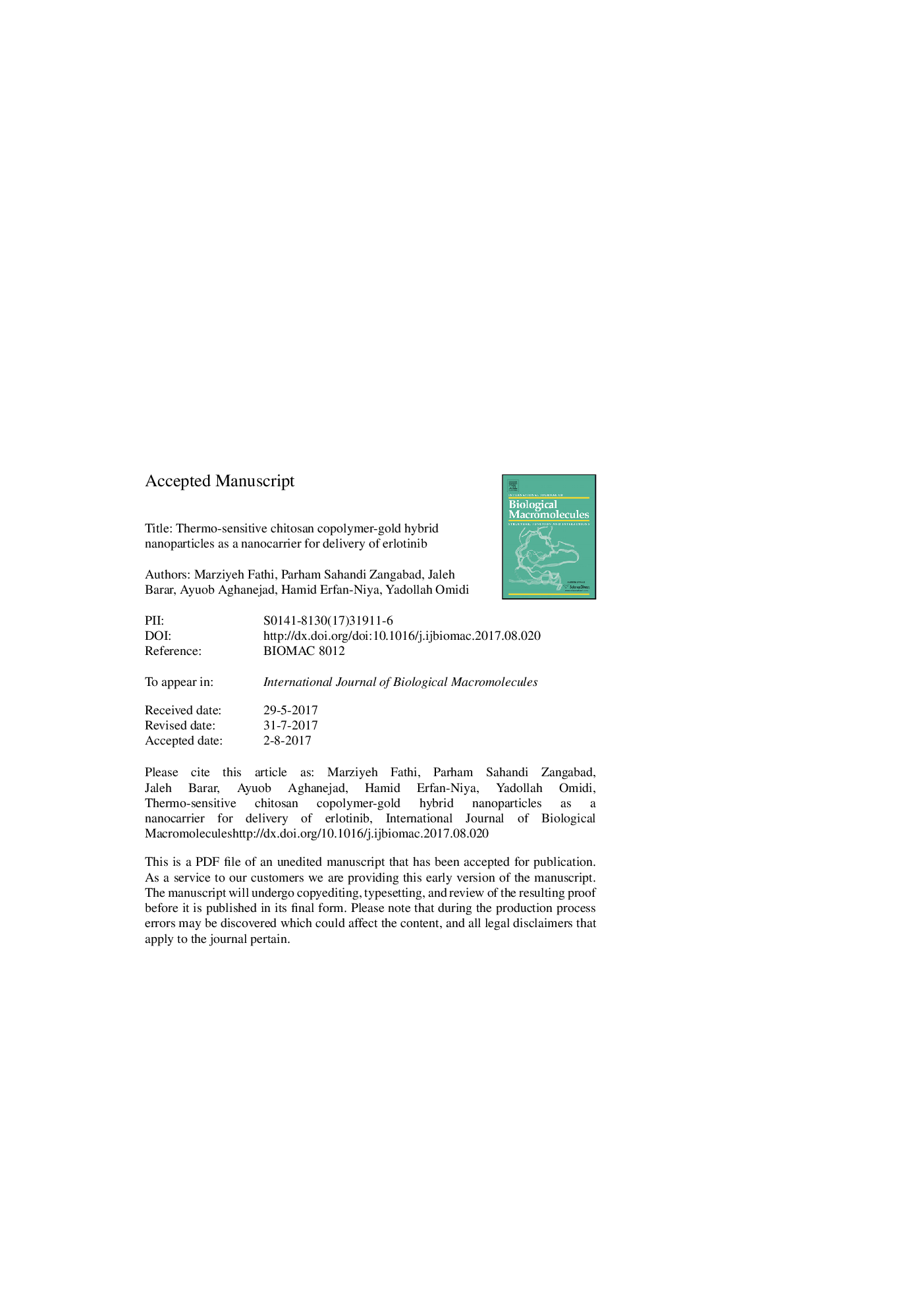| Article ID | Journal | Published Year | Pages | File Type |
|---|---|---|---|---|
| 8329022 | International Journal of Biological Macromolecules | 2018 | 35 Pages |
Abstract
Here, using (poly(N-isopropylacrylamide)-co-oleic acid)-g-chitosan ((PNIPAAm-co-OA)-g-CS), CS copolymer-gold hybrid nanoparticles (CGH NPs) were synthesized by autoreduction of auric cations (HAuCl4) in aqueous solution in the absence of any other reducing agent. The engineered thermo-sensitive CS copolymer with free amino groups could reduce auric cations and stabilized the resultant NPs. CGH NPs were prepared using different concentrations of CS copolymer (0.1-1% w/v) and HAuCl4 (50-500 μL, 0.2% w/v). They were characterized in terms of structure, surface Plasmon band, zeta potential, atomic absorption, stability, size and size distribution. The obtained CGH NPs showed a size range of 80-100 nm and high stability at different pHs with no observable agglomeration/sedimentation for couple of months. The loading efficiency of erlotinib (ETB) in the CGH NPs was about 30%. The ETB was released from the CGH NPs in a thermo-responsive manner. FACS flow cytometry analysis confirmed high cellular uptake (85.81%) of CGH NPs by A549 cells. The cytotoxicity evaluations proved the cytocompatibility and high anti-tumor effect of the engineered CGH NPs. Based on these findings, having used thermo-sensitive CS copolymer, CGH NPs were obtained in one-pot procedure, which could be considered as stimuli-responsive delivery system with potential biomedical applications.
Related Topics
Life Sciences
Biochemistry, Genetics and Molecular Biology
Biochemistry
Authors
Marziyeh Fathi, Parham Sahandi Zangabad, Jaleh Barar, Ayuob Aghanejad, Hamid Erfan-Niya, Yadollah Omidi,
